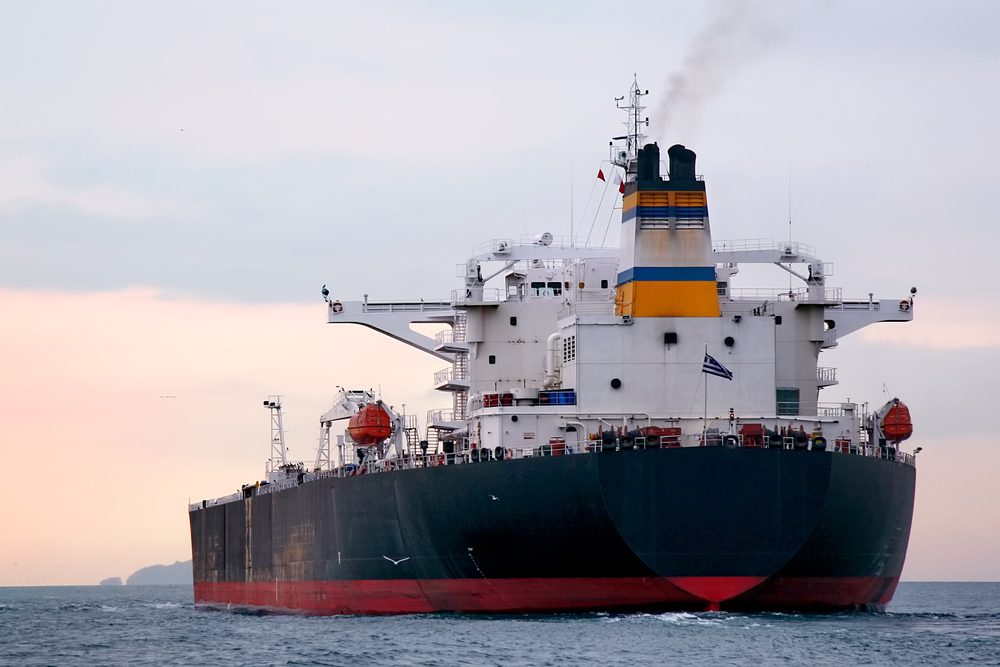Iranian Ship Linked to Houthi Attacks Heads Home Amid Tensions
(Bloomberg) — An Iranian ship that’s been linked to Houthi attacks in the Red Sea is returning home, removing a prominent asset in the area as the Islamic Republic braces...


![]()
![]()
By Sinead Carew
Aug 7 (Reuters) – Maritime stocks have broadly fallen this year as weak demand for some commodities and goods in Asia and oversupply of ships have hurt much of the industry, with one notable exception: Oil tankers have been doing a booming business and their shares are up as much as 50 percent year to date.
Growth in oil tanker shares can run a bit longer, analysts and investors say, though they see weakness in dry bulk, liquid natural gas and container shipping extending into 2016 or beyond.
The broad maritime market, as represented by the Guggenheim Invest Shipping ETF, has fallen 8.5 percent so far this year. The Guggenheim ETF includes companies ranging from oil tanker Nordic American Tankers Ltd, which has risen 48.7 percent, dry bulk carrier Navios Maritime, whose shares have fallen more than 11 percent, and liquid natural gas shipper Gaslog Ltd, which has fallen 31.7 percent.
Shippers of crude oil and refined oil products have been able to charge their highest daily rates in years because elevated oil production has led to strong shipping volume. Investors see high volume oil shipments keeping the tanker fleet busy as the Organization of the Petroleum Exporting Countries focuses on market share over oil prices.
“The next 18 months or so should be pretty good,” said Ian McDonald, an analyst at asset manager T. Rowe Price, which holds shares of Teekay Tankers,, which have risen 42.7 percent this year.
Even after that runup, Teekay Tanker is relatively cheap with a 5.4 ratio of enterprise value to earnings before interest tax, depreciation and amortization compared with a 9.3 average since its late 2007 initial public offering, according to McDonald.
Oil tanker investors are also looking forward to winter. Summer rates typically trend lower because capacity is less constrained when seas are smooth and daylight hours are long, making for more efficient trips than in winter when ships are tied up.
Winter heating oil demand will also boost ship use, according to Douglas Mavrinac, analyst at Jefferies in New York, citing industry expectations for an increase in crude demand.
Not so booming are shipping firms specializing in liquid natural gas, where fleets are about 10 percent bigger than they need to be, given slowing growth in demand from key markets including China, Japan and South Korea, said Paul Wogan, chief executive of LNG transporter GasLog. He sees a ramp-up in Australian shipments and increased exports from new U.S. facilities in 2016 improving the outlook in 2016.
Dry bulk shipping stocks also have suffered this year from slowing demand in China for coal and iron ore. Shares in International Shipholding Corp have tumbled 60 percent this year, mostly due to weak dry bulk shipping rates.
Fewer new ships are coming online to replace many that are being scrapped, so another 18 months should see some rate improvement in the dry bulk area, said Steven Baffico, chief executive of specialty maritime lender Global Marine Transport Capital.
An oversupply of ships has also constrained container shipping firms like Costamare Inc, down 10 percent in 2015 and Box Ships Inc, down 3.5 percent. (Additional reporting by Oleg Vukmanovic in Milan, and Tariro Mzezewa and Scott DiSavino in New York; Editing by Linda Stern and Leslie Adler)
(c) Copyright Thomson Reuters 2015.
Join the gCaptain Club for curated content, insider opinions, and vibrant community discussions.


Join the 105,983 members that receive our newsletter.
Have a news tip? Let us know.
Access exclusive insights, engage in vibrant discussions, and gain perspectives from our CEO.
Sign Up




Maritime and offshore news trusted by our 105,983 members delivered daily straight to your inbox.



Essential news coupled with the finest maritime content sourced from across the globe.
Sign Up